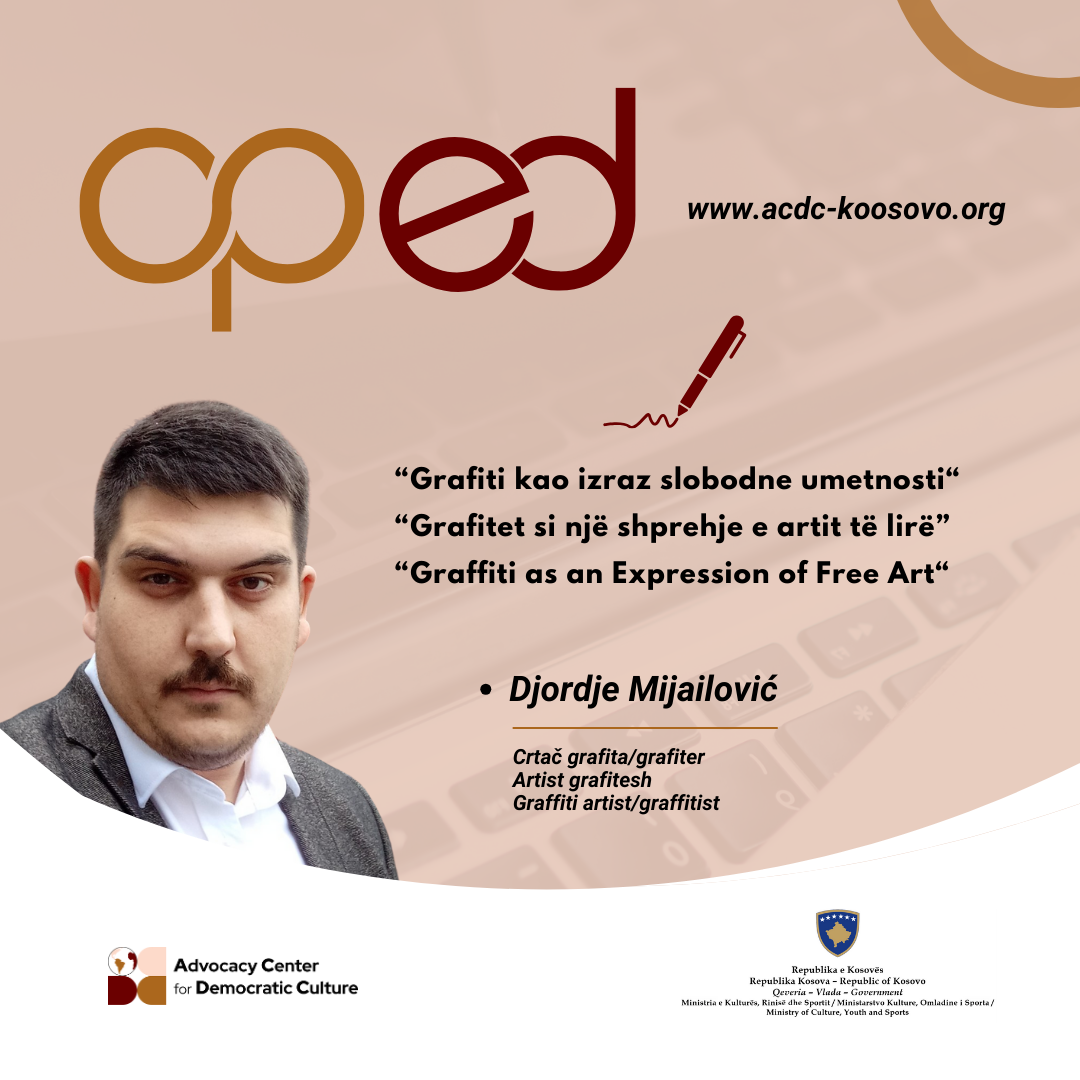15.04.2024. » 16:20
OP - ED Graffiti as an Expression of Free Art
People have been writing on walls since ancient times; just look at the 30,000-year-old examples of cave art found in the Chauvet Cave in southern France or the equally ancient Aboriginal rock art in Wunnumurra Gorge, Australia. Alongside these ancient examples, archaeologists have discovered a vast amount of graffiti dating back over 2,000 years throughout the ancient city of Pompeii. Much of what historians know about Pompeii today has been learned from inscriptions found on its walls.

People have been writing on walls since ancient times; just look at the 30,000-year-old examples of cave art found in the Chauvet Cave in southern France or the equally ancient Aboriginal rock art in Wunnumurra Gorge, Australia. Alongside these ancient examples, archaeologists have discovered a vast amount of graffiti dating back over 2,000 years throughout the ancient city of Pompeii. Much of what historians know about Pompeii today has been learned from inscriptions found on its walls.
Graffiti have provided archaeologists with such insight into ancient life that archaeologists have their own term for them, 'graffito,' meaning 'an ancient drawing or inscription scratched on a wall or other surface (usually without permission and in a public space).'
While graffiti have been present in all human cultures throughout history, the graffiti we know today originated in the late 1960s in New York City. The movement, then known as 'writing,' began with kids tagging their names on walls and trains, evolving into a 'game' revolving around who could be more prominently displayed. As 'writing' gained popularity, 'writers' had to become more creative with their designs to stand out and be noticed.
Tags evolved in style and moved from street walls to the interiors and exteriors of trains. Writers could send their name to every neighborhood in New York City via the subway.
One of the earliest pioneers was 'Taki 183.' Taki was a shorthand for his Greek Christian name, and 183 was the street number where he lived. Other early known writers include Phase 2 and Futura 2000, some of the first to push creativity in writing.
Tags evolved from names on walls to massive, multicolored masterpieces with thick letters, outlines, and decorations called 'pieces.' Fame came from 'getting up,' or having a larger presence on all public surfaces with more varied and complex pieces.
Before rappers gained fame by rhyming at local jams, writers were known personalities of the street and the ghetto.
The movement of writing on trains and 'getting up' continued to grow globally throughout the 70s, 80s, and 90s. The graffiti subculture spread to almost every major city in the Western world. One of the main reasons for the worldwide acceptance of graffiti was the book 'Subway Art.' Written by two highly respected photographers from New York, Henry Chalfant and Martha Cooper, the book documented years of graffiti on New York trains and became the Bible for writers worldwide.
In the early 1990s, New York City suffered from a serious crime wave. Murders, robberies, drug deals, car thefts, and gang violence engulfed the city and made it inhospitable. Mayor Rudolph Giuliani understood the need for public order and peace, thus began the crackdown on crime with a promise to clean the subway of graffiti. This signaled the end of an era, but until then, the graffiti subculture had spread worldwide and remains popular to this day, as it always has been.
Having good handstyle is the first achievement for graffiti artists. The letters of your tag show your style and who you really are. Remember, tags are just names designed to be written quickly and in large quantities. Modern tags have evolved into something called calligraffiti – a combination of tags and calligraphy.
Today's graffiti pieces are true works of art and consist of wild, unique styles ranging from abstraction to photorealism. Despite the wide range of styles, the principles of a piece remain the same to this day.
Today, graffiti artists use light, perspective, and intense realistic details to create the illusion of space and shape. Although traditional 'bubble' characters from the 80s are still popular, photorealism is the main change in character design in the modern era.
Today, it's hard to make a distinction between traditional graffiti and modern 'street art.' Sometimes, a piece may not possess letters and may be just a character, colors, or shapes that merge into a familiar image that evokes emotion, similar to other forms of art, but writers still leave their tag.
Before the internet era, writers exchanged sketches and photos of street art from their area among themselves. When Martha Cooper and Henry Chalfant's book came out in 1984, the street art scene exploded worldwide. Today, with the evolution of social media, Instagram has become the world's largest public gallery of street art and graffiti, a place where artists can connect to share their work and be inspired.
Djordje Mijailović, graffiti artist/graffitist
Latest news







